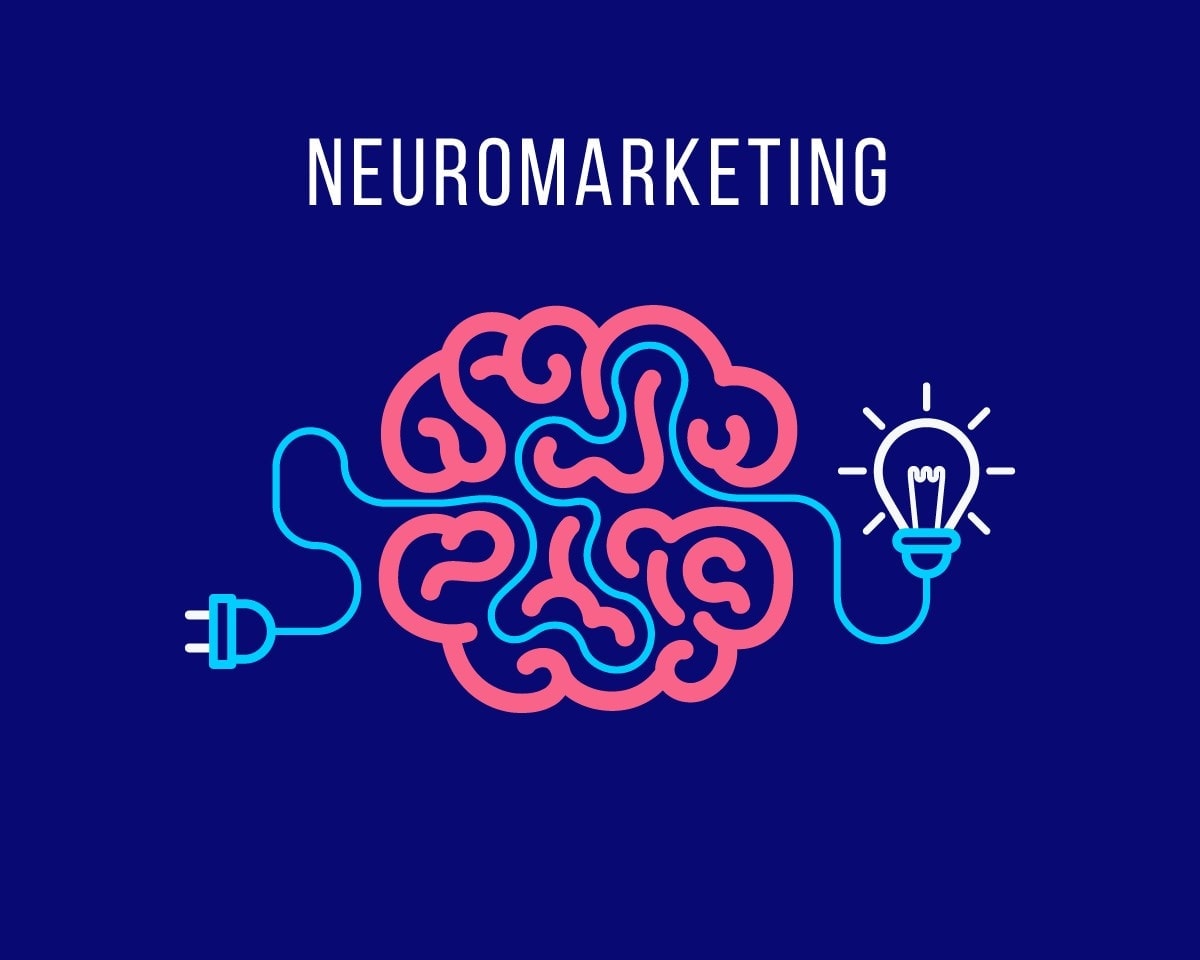Երբևէ պատահե՞լ է, որ ինչ-որ բան վերցնեք խանութի դարակից, որովհետև այն «ճիշտ էր թվում»: Գուցե գովազդն է հուզել ձեզ, կամ փաթեթավորումը գրավել ձեր ուշադրությունը: Եթե այո, ապա դուք արդեն եղել եք նեյրոմարքեթինգի ազդեցության տակ՝ հոգեբանության և մարքեթինգի հետաքրքիր խառնուրդ, որը քննում է, թե ինչու ենք մենք կայացնում որոշակի գնման որոշումներ։
Ինչու՞ է անհրաժեշտ նեյրոմարքեթինգը
Նեյրոմարքեթինգի արմատները սկիզբ են առնում 1970-ականների վերջին, երբ հոգեբաններ Դանիել Կանեմանը և Ամոս Տվերսկին ուսումնասիրում էին, թե ինչպես ենք մենք որոշումներ կայացնում։ Նրանց հեղափոխական հետազոտությունը բացահայտեց, որ մենք հաճախ օգտագործում ենք մտավոր կծկումներ, որոնք հայտնի են որպես հեուրիստիկա, արագ որոշումներ կայացնելու համար։ Այս կծկումները, թեև օգտակար են, կարող են նաև հանգեցնել ճանաչողական խափանումների՝ մտածողության սխալների, որոնք կարող են էական ազդեցություն ունենալ մեր որոշումների վրա։
Կանեմանի և Տվերսկու աշխատանքը հեղափոխեց որոշումների կայացման վերաբերյալ մեր պատկերացումները ՝ ցույց տալով, որ մենք հեռու ենք բանական սպառողներից, ինչպես ժամանակին կարծում էին տնտեսագետները: Նրանց գաղափարները Կանեմանին բերեցին Նոբելյան մրցանակ և հիմք դրեցին սպառողների վարքի հոգեբանական ասպեկտները հասկանալու համար:
Մարքեթոլոգները նկատեցին սա։ Եթե մենք միշտ չենք կարող վստահել մարդկանց, որ բացատրեն իրենց ընտրությունները, ինչու՞ ուղիղ չուսումնասիրել նրանց ուղեղները: Եվ այսպես ծնվեց նեյրոմարքեթինգը՝ մի ոլորտ, որը միավորում է կոգնիտիվ հոգեբանությունը, նյարդաֆիզիոլոգիան և մարքեթինգը, որպեսզի ավելի լավ հասկանա, թե ինչն է դրդում մեզ գնում կատարել։
Ինչպե՞ս է աշխատում նեյրոմարքեթինգը
Նեյրոմարքեթինգը ուսումնասիրում է անգիտակցական գործոնները, որոնք ձևավորում են մեր գնման որոշումները՝ գույներ, ձայներ, հոտեր և նույնիսկ շոշափումներ։ Օգտագործելով առաջադեմ տեխնոլոգիաներ, մարքեթոլոգները կարող են դիտարկել, թե ինչպես է մեր ուղեղը արձագանքում տարբեր գրգռիչներին, օգնելով նրանց մշակել ավելի արդյունավետ գովազդներ, արտադրանքի դիզայններ և նույնիսկ խանութների դասավորություններ։
Տեսողական ազդեցություն
Մեր աչքերը հսկայական դեր են խաղում որոշումների կայացման գործում: Գույներն ու նախշերը, որոնց մենք հանդիպում ենք, կարող են ուժեղ հույզեր և ասոցիացիաներ առաջացնել: Օրինակ ՝ կարմիրը կարող է արագացնել սրտի բաբախյունը և հրատապության զգացում առաջացնել, մինչդեռ կապույտը կարող է հանգստացնել մեզ: Բրենդները զգուշորեն ընտրում են իրենց գունային սխեմաները, որպեսզի առաջացնեն այդ ռեակցիաները։ Պատկերացրեք Coca-Cola-ի կարմիրը կամ Tiffany & Co.-ի հայտնի «Թիֆանիի կապույտը»՝ երկուսն էլ անմիջապես ճանաչելի են և իմաստ ունեն իրենց մեջ։

Լսողական ազդակներ
Ձայնը նեյրոմարքեթինգի մեկ այլ կարևոր գործոն է: Ուսումնասիրությունները ցույց են տվել, որ ճիշտ երաժշտությունը կարող է ազդել մեր ընտրության վրա, նույնիսկ եթե մենք դա չենք գիտակցում: Օրինակ՝ գինու խանութի փորձի ընթացքում հաճախորդներն ավելի հավանական է, որ ընտրեն գերմանական գինի, երբ հնչում էր գերմանական երաժշտություն, և Ֆրանսիական գինի, երբ հնչում էին ֆրանսիական մեղեդիներ: Սակայն հաճախորդները հերքում էին, որ երաժշտությունը որևէ ազդեցություն է ունեցել իրենց որոշման վրա, ինչը ընդգծում է, թե որքան նուրբ և հզոր կարող են լինել այս ազդեցությունները։
Հոտ և համ
Հոտը ուղեղում ռեակցիա առաջացնելու ամենաուղղակի միջոցներից մեկն է: Ահա թե ինչու անշարժ գույքի գործակալները կարող են թխվածքաբլիթներ թխել նախքան տան ցուցադրումը՝ ստեղծելով հարմարավետ և հրապուրիչ մթնոլորտ։ Նմանապես, հյուրանոցները և խանութները հաճախ օգտագործում են հատուկ հոտեր՝ հաճախորդների փորձը բարելավելու համար։ Օրինակ՝ Օռլանդոյի Hard Rock հյուրանոցը մեծացրեց պաղպաղակի վաճառքը 45%-ով՝ ավելացնելով թխվածքաբլիթների և վաֆլիների հոտը միջավայրում։
Համն ու հպումը նույնպես կարևոր դեր են խաղում այն բանում, թե ինչպես ենք մենք ընկալում սնունդը: Ուսումնասիրելով տարբեր հյուսվածքների և համերի նկատմամբ ուղեղի ռեակցիաները՝ մարքեթոլոգները կարող են բարելավել իրենց առաջարկները, որպեսզի ավելի լավ համապատասխանեն սպառողի ցանկություններին։
Նեյրոմարքեթինգը գործողության մեջ
Նեյրոմարքեթինգը միայն սենսորային ազդեցությունների հասկանալը չէ, այլ դրանց ռազմավարական կիրառումը։ Օրինակ՝ Coca-Cola-ի և Pepsi-ի մասնակցությամբ հայտնի ուսումնասիրության ժամանակ մասնակիցների նախապատվությունները փոխվում էին, երբ նրանք գիտեին, թե որ բրենդն են համտեսում։ Թեև կույր թեստերի ժամանակ հաճախ նախընտրում էին Pepsi-ն, Coca-Cola-ի պիտակը ցուցադրելը ակտիվացնում էր ուղեղի այն հատվածները, որոնք կապված են սոցիալական հաճույքի հետ՝ ցույց տալով բրենդինգի ուժը։
Մարքեթոլոգները նաև օգտագործում են ճանաչողական խափանումները իրենց օգտին։ «Անխորինգ» էֆեկտը, օրինակ, տարածված մեթոդ է, որտեղ նախ ցույց են տալիս բարձր գին, իսկ հետո ներկայացնում ցածր գինը, ինչը վերջինիս ձեռնտու է թվում: Սթիվ Ջոբսը հայտնիորեն օգտագործել է այս հնարքը iPad-ը ներկայացնելիս՝ սկզբում առաջարկելով $1000 գին, այնուհետև բացահայտելով իրական գինը՝ $499, ինչը միանգամից այն դարձրեց ավելի շահավետ։

Նեյրոմարքեթինգի Գործիքներ
Նեյրոմարքեթինգը հենվում է մի շարք բարձր տեխնոլոգիական գործիքների վրա, որոնք թույլ են տալիս ներթափանցել սպառողների գլխի մեջ՝ բառիս բուն իմաստով
Աչքի Շարժման Հետևում
Աչքերի շարժմանը հետևող սարքերը մոնիտորինգ են անում, թե որտեղ ենք նայում և որքան ժամանակ, օգնելով մարքեթոլոգներին հասկանալ, թե ինչն է գրավում մեր ուշադրությունը։ Այս տվյալները կարող են օգտագործվել ավելի արդյունավետ գովազդներ, կայքեր և ապրանքներ ցուցադրելու համար:
Մաշկի Գալվանիկ Ռեակցիա
Այս մեթոդը չափում է մաշկի հաղորդունակությունը՝ գնահատելու համար էմոցիոնալ գրգռվածությունը։ Հետևելով, թե որքան ենք քրտնում որոշակի խթանների արձագանքելուց, մարքեթոլոգները կարող են գնահատել մեր ներգրավվածության և էմոցիոնալ արձագանքի մակարդակը։
Դեմքի Ճանաչում և Բիոմետրիկա
Առաջատար տեսախցիկներն ու ծրագրակազմը վերլուծում են դեմքի արտահայտությունները՝ որոշելու համար, թե ինչ ենք զգում, երբ հանդիպում ենք բրենդի կամ ապրանքի հետ։ Այս տեխնոլոգիան օգնում է մարքեթոլոգներին բարելավել իրենց ասելիքը՝ հուզական մակարդակում իրենց լսարանի հետ ավելի լավ շփվելու համար:
Նեյրոմարքեթինգի Ապագան
Տեխնոլոգիաների զարգացման հետ մեկտեղ գիտության և մարքեթինգի միջև սահմանը շարունակում է մթագնել։ Նեյրոմարքեթինգը աննախադեպ պատկերացում է տալիս, թե ինչն է մեզ շարժում, օգնելով բրենդներին ստեղծել ավելի գրավիչ և արդյունավետ ռազմավարություններ։ Սակայն այն նաև առաջ է բերում կարևոր էթիկական հարցեր այն մասին, թե որքան ազդեցություն պետք է ունենան մարքեթոլոգները մեր ենթագիտակցության վրա։
Ի վերջո, թեև նեյրոմարքեթինգը կարող է թվալ որպես ուղեղները «կոտրելու» միջոց, այն նույնպես կարող է բարելավել մեր սպառողական փորձառությունները՝ դարձնելով դրանք մեր իրական ցանկություններին համապատասխան՝ անկախ նրանից, գիտակցում ենք դրանք, թե ոչ։
Այսպիսով, հաջորդ անգամ, երբ կզգաք, որ ինչ-որ ապրանք ցանկանում եք գնել առանց պատճառի, հիշեք, որ դա կարող է լինել պարզապես ձեր ուղեղի արձագանքը լավ կատարված նեյրոմարքեթինգին:
